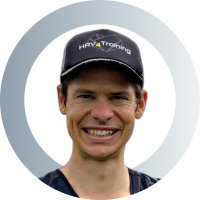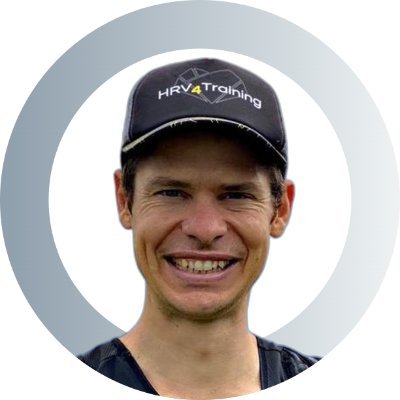
Daniel Rowland@dwrowland
Sep 23, 2022
26 tweets
NUTRITION FOR ULTRAS
In previous threads on preparing for UTMB and lessons from UTMB I only touched briefly on nutrition.
In this thread my intention is to pull together a range of resources and ideas to assist with nutrition for ultramarathons.
(1/n)
Nutrition is a difficult topic because there are evidence-based recommendations, but they are not always followed.
In this paper we see that elite athletes did follow guidelines (71g/hr CHO):
journals.humankinetics.com/view/journals/
(2/n)
Yet, this study of amateur athletes doing 24 and 48 hour races they did not meet recommendations (mean of 33g/hr CHO):
frontiersin.org/articles/10.33
And this paper on pre-exercise nutrition showed a large number of athletes not following guidelines:
tandfonline.com/doi/abs/10.108
(3/n)
To understand these evidence-based recommendation, a good starting point is @Asker Jeukendrup 2011 paper on nutrition for endurance sports:
tandfonline.com/doi/pdf/10.108
(4/n)
Outside of these studies and guidelines we see athletes succeeding in endurance events using a wide range of different nutrition strategies. Maybe a good starting point is to ask:
1) WHAT'S POSSIBLE?
(5/n)
There are examples of athletes succeeding with nutrition strategies ranging from very low CHO to very high CHO, from all-liquid sports nutrition to only real food, from carrying their own nutrition to only relying on aid stations.
(6/n)
The context of these different results and different strategies is quite important and can contribute to defining what is possible:
1a) modality - eating and digesting is easier in cycling compared to running and easier in running compared to swimming.
(7/n)
1b) duration - eating a certainly hourly rate is easier in a 4-5 hour event or as an elite running 14hrs at Western States compared to an amateur at UTMB or an athlete during a 24 or 48 hour race.
(8/n)
1c) accessibility - food availability for an elite with a crew or an athlete at a 24 hour race is very different to a self-supported athlete at an ultra with few aid stations.
Clearly "what's possible" may not always meet the recommendations even if that is the goal.
(9/n)
2) FUEL THE WORK REQUIRED
In this paper the authors recommend a periodized approach to nutrition in training:
pubmed.ncbi.nlm.nih.gov/29453741/
And this article explains a "right fuel, right time" approach to nutrition:
endureiq.com/blog/right-fue
(10/n)
Race nutrition should also follow the "work required" paradigm. A shorter ultra at high intensity may necessitate more exogenous CHO intake than a long, low-intensity ultra where fat oxidation can be relied on more heavily.
(11/n)
3) TRAINING NUTRITION INTAKE
If the logistics of the race allow it, and the intensity demands it, then using a high CHO approach can be the right solution. However, our gut needs to be able to tolerate this approach.
(12/n)
This 12-week guide from @Aitor Viribay Morales is an excellent resource on gut training:
glut4science.com/publicaciones/
And in this twitter thread there is plenty of advice on gut training:
twitter.com/dwrowland/stat
(13/n)

Daniel Rowland@dwrowland
Apr 21 22
View on Twitter
Race nutrition during a 24hr run:
"In-race CHO intake was only in the 30–60g/h range"
"Strong to moderate positive correlations were observed between distance covered and both CHO and energy intake"
frontiersin.org/articles/10.33?
Alternatively, if you want to increase your fat oxidation to use a lower CHO approach you will also need some adjustments to your diet and training nutrition. This guide suggests that may be more beneficial than training the gut:
endureiq.com/blog/gut-train
(14/n)
Whichever approach you choose, it's important to make sure that you do the training necessary for that approach and that you don't do something new on race day.
(15/n)
4) HIGH CHO + EXAMPLES
The potential to use a high CHO approach in mountain ultras along with the benefits were shown in this paper:
mdpi.com/2072-6643/12/5
There have also been many examples of World Tour cycling teams using up to 120g/hr CHO.
(16/n)
Stian Angermud has shared his race nutrition from Sky races and he was consuming ~100g/hr:
instagram.com/p/CgM2FZxMffd/
instagram.com/p/Ce_4grXM_9G/
instagram.com/p/CWtFgG3MyIE/
(17/n)
Petter Engdahl shared his CCC nutrition and he consumed ~120g/hr of drinks and gels:
instagram.com/p/CicsVi4IzL0/
Tom Evans reported that for UTMB he used ~95g/hr of mostly Maurten and Red Bull.
(18/n)
5) MID-RANGE CHO EXAMPLE
According to the data shared in this post:
mtnath.com/training2022/
My calculation for Kilian's nutrition during his races this year was:
Hardrock = ~55g/hr
UTMB = ~75g/hr
(19/n)
6) LOW CHO EXAMPLES
Zach Bitter has reported using 40g/hr during his races (primarily 100mi).
Jeff Browning has reported using 40-50g/hr during his races (primarily 100mi).
Dan Plews reported using 50g/hr during the bike and a total of 40g during the run in Kona.
(20/n)
7) RESOLVING GUT ISSUES
Nausea and/or vomiting is the primary cause of a DNF at ultramarathons:
pubmed.ncbi.nlm.nih.gov/21487147/
Therefore figuring out a nutrition strategy that works for you is vital.
(21/n)
If you are struggling with stomach issues, then a very useful resource is @Patrick Wilson book:
pubmed.ncbi.nlm.nih.gov/21487147/
(22/n)
8) PRACTICAL TAKEAWAY
A good place to start is the evidence-based recommendations of 60g/hr CHO.
If you know the intensity of your race is going to be high and you have access to your own in-race nutrition, considering increasing CHO intake.
(23/n)
Increasing CHO intake will require training and practice at race intensity.
We've seen up to 120g/hr for a 10hr ultra and up to 95g/hr for a 20hr ultra are possible.
If you're having stomach issues or the pace of your race is lower...
(24/n)
...consider either trying to resolve these issues using the Athletes' Gut book (mentioned above) or start working towards a low CHO strategy. Again this will take training and time to develop.
(25/n)
All of the points in this thread, along with the information from the previous two threads on preparing for UTMB, can be found on my blog:
dwrowland.com/p/how-to-prepa
I hope you find this useful.
(/end)

Daniel Rowland
@dwrowland
My goal is to curate a timeline full of research and insights from coaches, scientist and athletes to help us become better endurance athletes. #HRV4Training.
Missing some tweets in this thread? Or failed to load images or videos? You can try to .









